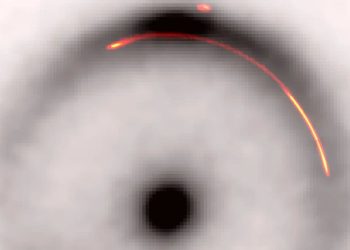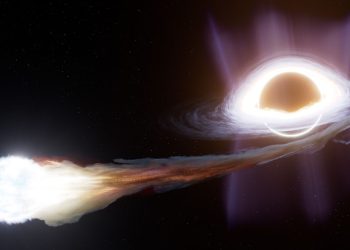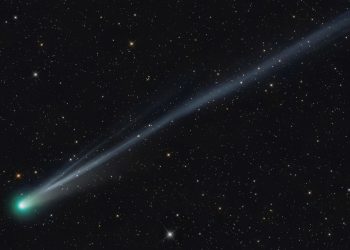NEW YORK (AP) — Two bright green comets are streaming into the skies and are visible to sky observers in the Northern Hemisphere.
Both originate from the outer limits of our solar system – perhaps the so-called Oort cloudfar beyond Pluto. Comet Lemmon will make its closest contact with Earth on or around Tuesday. The other cosmic snowball, comet SWAN, is expected to make its flyby with Earth on Monday, but it is moving away from the sun and will likely fade as the days pass.
Spotting two comets simultaneously without special equipment is “rare, but not unprecedented,” said Carson Fuls, director of the University of Arizona-based sky survey that spotted Comet Lemmon.
To see the pair, go outside just after sunset and look toward the northern sky to find Comet Lemmon near the horizon. Comet SWAN will also be close to the horizon, but to the southwest.
The double comets could be visible with binoculars until the end of the month, but experts don’t yet know for sure how bright they will be, said astronomer Valerie Rapson of the State University of New York at Oneonta.
Comets are frozen remains from the formation of the solar system billions of years ago. They warm up as they swing toward the sun, releasing their characteristic tails.
Comet Lemmon, also designated C/2025 A6, was discovered in January by a telescope scanning the night sky for near-Earth asteroids. Comet SWAN, also known as C/2025 R2, was spotted in September by an amateur astronomer using photos taken by a spacecraft operated by NASA and the European Space Agency.
Comets are green because of gases escaping from their surfaces. From Earth, they will look like gray, fuzzy spots.
Earlier this year, a green comet broke up as it passed in front of the sun, dashing hopes of a naked-eye spectacle. A bright comet called Tsuchinshan-Atlas flew by Earth in 2024, and other notable flybys include Neowise in 2020 and Hale-Bopp and Hyakutake in the 1990s.
___
The Associated Press Health and Science Department receives support from the Howard Hughes Medical Institute’s Department of Science Education and the Robert Wood Johnson Foundation. The AP is solely responsible for all content.









